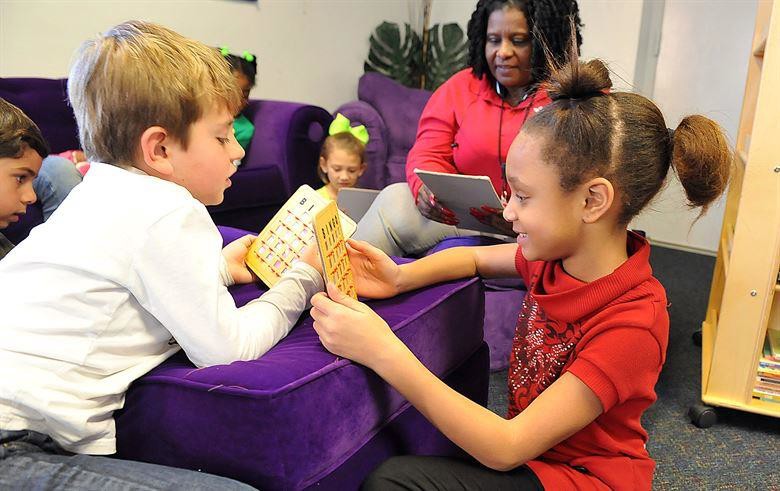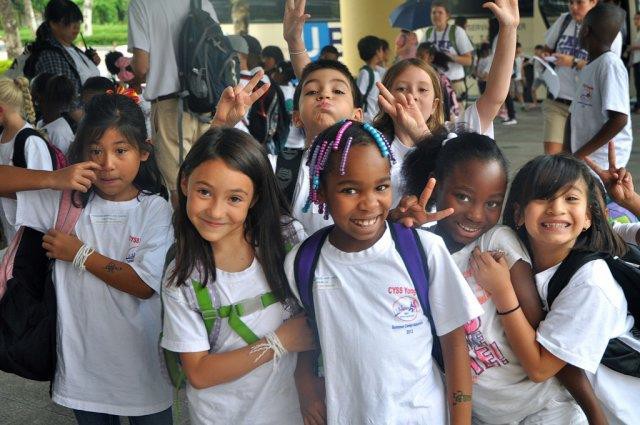107 Friendships, Peers, and Peer Groups
Parent-child relationships are not the only significant relationships in a child’s life. Friendships take on new importance as judges of one’s worth, competence, and attractiveness. Friendships provide the opportunity for learning social skills such as how to communicate with others and how to negotiate differences. Children get ideas from one another about how to perform certain tasks, how to gain popularity, what to wear, say, and listen to, and how to act. This society of children marks a transition from a life focused on the family to a life concerned with peers. Peers play a key role in a child’s self-esteem at this age as any parent who has tried to console a rejected child will tell you. No matter how complimentary and encouraging the parent may be, being rejected by friends can only be remedied by renewed acceptance.[1]

Children’s conceptualization of what makes someone a “friend” changes from a more egocentric understanding to one based on mutual trust and commitment. Both Bigelow (1977) and Selman (1980) believe that these changes are linked to advances in cognitive development. Bigelow and La Gaipa (1975) outline three stages to children’s conceptualization of friendship.[2]
|
Stage |
Descriptions |
|
Stage One |
In stage one, reward-cost, friendship focuses on mutual activities. Children in early, middle, and late childhood all emphasize similar interests as the main characteristics of a good friend. |
|
Stage Two |
In stage two, normative expectation, focuses on conventional morality; that is, the emphasis is on a friend as someone who is kind and shares with you. Clark and Bittle (1992) found that fifth graders emphasized this in a friend more than third or eighth graders. |
|
Stage Three |
In stage three, empathy and understanding, friends are people who are loyal, committed to the relationship, and share intimate information. Clark and Bittle (1992) reported eighth graders emphasized this more in a friend. They also found that as early as fifth grade, girls were starting to include the sharing of secrets and not betraying confidences as crucial to someone who is a friend. |
Friendships are very important for children. The social interaction with another child who is similar in age, skills, and knowledge provokes the development of many social skills that are valuable for the rest of life (Bukowski, Buhrmester, & Underwood, 2011). In these relationships, children learn how to initiate and maintain social interactions with other children. They learn skills for managing conflict, such as turn-taking, compromise, and bargaining. Play also involves the mutual, sometimes complex, coordination of goals, actions, and understanding. Through these experiences, children develop friendships that provide additional sources of security and support to those provided by their parents.[4]
Five Stages of Friendship from Early Childhood through Adulthood[5]
Selman (1980) outlines five stages of friendship from early childhood through to adulthood.
- In stage 0, momentary physical interaction, a friend is someone who you are playing with at this point in time. Selman notes that this is typical of children between the ages of three and six. These early friendships are based more on circumstances (e.g., a neighbor) than on genuine similarities.
- In stage 1, one-way assistance, a friend is someone who does nice things for you, such as saving you a seat on the school bus or sharing a toy. However, children in this stage, do not always think about what they are contributing to the relationships.
- Nonetheless, having a friend is important and children will sometimes put up with a not so nice friend, just to have a friend. Children as young as five and as old as nine may be in this stage.
- In stage 2, fair-weather cooperation, children are very concerned with fairness and reciprocity, and thus, a friend is someone who returns a favor. In this stage, if a child does something nice for a friend there is an expectation that the friend will do something nice for them at the first available opportunity. When this fails to happen, a child may break off the friendship. Selman found that some children as young as seven and as old as twelve are in this stage.
- In stage 3, intimate and mutual sharing, typically between the ages of eight and fifteen, a friend is someone who you can tell them things you would tell no one else. Children and teens in this stage no longer “keep score,” and do things for a friend because they genuinely care for the person. If a friendship dissolves in this stage it is usually due to a violation of trust. However, children in this stage do expect their friend to share similar interests and viewpoints and may take it as a betrayal if a friend likes someone that they do not.
- In stage 4, autonomous interdependence, a friend is someone who accepts you and that you accept as they are. In this stage children, teens, and adults accept and even appreciate differences between themselves and their friends. They are also not as possessive, so they are less likely to feel threatened if their friends have other relationships or interests. Children are typically twelve or older in this stage.
In this video, Dr. Boise reviews two models for looking at stages of friendship as children develop
Peer Groups
However, peer relationships can be challenging as well as supportive (Rubin, Coplan, Chen, Bowker, & McDonald, 2011). Being accepted by other children is an important source of affirmation and self-esteem, but peer rejection can foreshadow later behavior problems (especially when children are rejected due to aggressive behavior). With increasing age, children confront the challenges of bullying, peer victimization, and managing conformity pressures. Social comparison with peers is an important means by which children evaluate their skills, knowledge, and personal qualities, but it may cause them to feel that they do not measure up well against others. For example, a boy who is not athletic may feel unworthy of his football-playing peers and revert to shy behavior, isolating himself and avoiding conversation.
Conversely, an athlete who doesn’t “get” Shakespeare may feel embarrassed and avoid reading altogether.

Also, with the approach of adolescence, peer relationships become focused on psychological intimacy, involving personal disclosure, vulnerability, and loyalty (or its betrayal)—which significantly affect a child’s outlook on the world. Each of these aspects of peer relationships require developing very different social and emotional skills than those that emerge in parent- child relationships. They also illustrate the many ways that peer relationships influence the growth of personality and self-concept.[6]
- Lifespan Development - Module 6: Middle Childhood by Lumen Learning references Psyc 200 Lifespan Psychology by Laura Overstreet, licensed under CC BY 4.0 ↵
- Lifespan Development - Module 6: Middle Childhood by Lumen Learning references Psyc 200 Lifespan Psychology by Laura Overstreet, licensed under CC BY 4.0 ↵
- Lifespan Development - Module 6: Middle Childhood by Lumen Learning references Psyc 200 Lifespan Psychology by Laura Overstreet, licensed under CC BY 4.0 ↵
- Content by Dawn Rymond is licensed under CC BY 4.0 ↵
- Lifespan Development: A Psychological Perspective by Martha Lally and Suzanne Valentine-French is licensed under CC BY-NC-SA 3.0 ↵
- Lifespan Development: A Psychological Perspective by Martha Lally and Suzanne Valentine-French is licensed under CC BY-NC-SA 3.0 ↵

